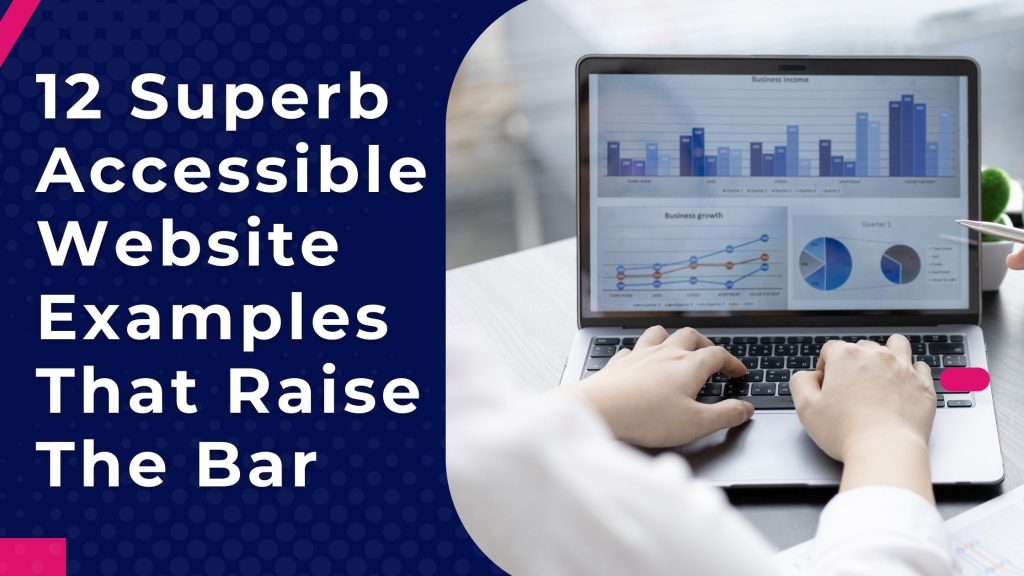
Cupisweb believes that everyone should be able to use any website on the internet, mindless of disabilities. While we prioritize web accessibility, we also recognize that creating a website that is both accessible and visually appealing can be challenging.
The good news is that it’s possible to design accessible websites without compromising on visual impact. Some of the most stunning websites are specifically designed to be accessible to people with disabilities, and we can all learn valuable lessons from them.
What Does Accessibility Mean?
Accessibility means making a website usable for as many people as possible, regardless of the device they are using.
More About Accessibility
In web design, accessibility ensures that everyone, including people with disabilities such as vision, hearing, and cognitive impairments, can access and use a website. For instance, adding subtitles to videos helps hearing-impaired users.
Common Elements of Accessibility
- Easy-to-understand text
- Minimal distractions
- Consistent layout and navigation
- Simple forms
- Audio transcripts
Accessibility also involves making sure a website works well on various devices, including desktops, tablets, and smartphones.
Creating accessible websites ensures that everyone can navigate and interact with content effectively.
Here are 12 outstanding examples of accessible websites that set a high standard:
- Cupisweb – Cupisweb stands out for its lightning-fast performance and exceptional accessibility features. Whether you’re a small business or a large enterprise, Cupisweb ensures your site is quick to load and easy to navigate for all users. Their commitment to providing top-tier speed and user-friendly interfaces sets them apart in the world of offshore web hosting.
- Scope (www.scope.org.uk) – This disability equality charity’s site is highly customizable, allowing users to adjust colors, text size, and enable text narration. It strictly follows WCAG guidelines and is screen reader compatible.
- Harvard University (www.harvard.edu) – Harvard’s website features multilingual subtitles, accessible color schemes, and a straightforward navigation menu, making it easy for users with various impairments to access information.
- Paralympic.org – The International Paralympic Committee’s site is designed with large, clear visuals and features keyboard-friendly navigation and customizable text sizes for visually impaired users.
- Walmart (www.walmart.com) – Walmart’s site highlights interactive elements to help users focus, and supports both mouse and keyboard navigation, ensuring a seamless shopping experience for all.
- KidsWish (www.kidzwishfoundation.org.au) – This charity’s site is vibrant, with high-contrast colors and large text. It is designed to be child-friendly and easily navigable using a keyboard.
- Nomensa (www.nomensa.com) – As a UX design agency, Nomensa offers web accessibility tests and services to help clients meet accessibility standards. The site’s co-founder helped draft the WCAG guidelines, underscoring their commitment to accessibility.
- Ovo Energy (www.ovoenergy.com) – This energy company’s site features large text, clear interfaces, and supports assistive technologies like British Sign Language services, Braille, and screen readers.
- Bleacher Report (bleacherreport.com) – The sports news site prioritizes important information like cookies policies and legal terms, making them easily accessible for screen reader and keyboard users.
- BBC iPlayer (www.bbc.co.uk) – The streaming service offers easy navigation, assistive technology compatibility, high-contrast buttons, and accessible video content with subtitles, audio descriptions, and signed content.
- Metropolitan Transportation Authority (new.mta.info) – The MTA site includes responsive design, intuitive search functions that accommodate typos, and easily navigable trip planners.
- NSW Government (www.nsw.gov.au) – This government portal uses tab navigation, large fonts, high-contrast colors, and is compatible with assistive technologies to serve all residents effectively.
- GOV.UK (www.gov.uk) – The U.K. government’s central website supports keyboard navigation, ARIA attributes, and high zoom levels for visually-impaired users, providing comprehensive information accessibly.
These examples demonstrate that accessibility and aesthetic appeal can go hand in hand, making the web a more inclusive place for all users.
